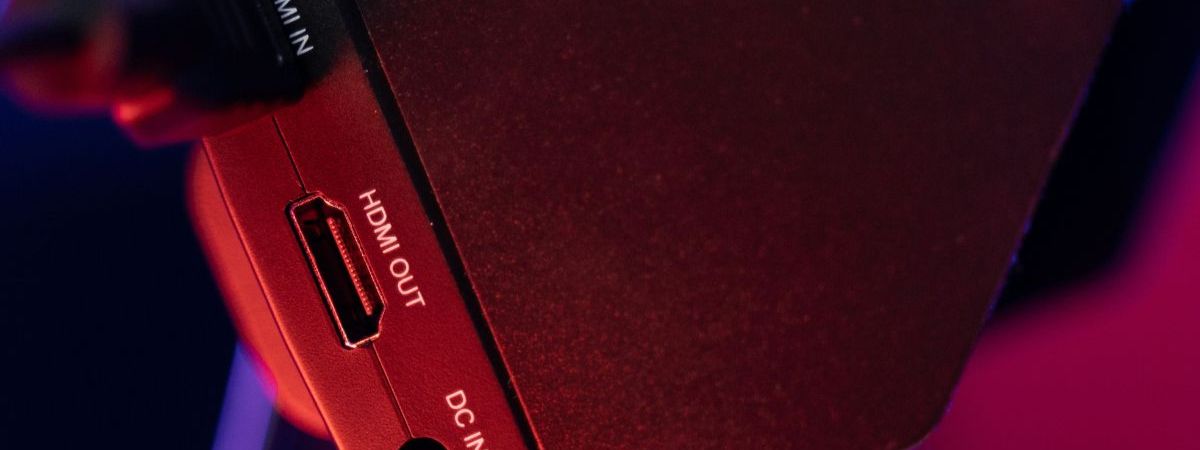Skip to the good bit
ToggleThe gaming industry has always been on the cutting edge, pushing the boundaries of what’s possible with technology. The rise of gaming laptops signifies a shift in how we play, work, and create, offering unprecedented power and portability.
We’ve witnessed the transformation of gaming laptops over the years. They are no longer just an alternative to traditional desktops but have become the go-to choice for many gamers. With top-of-the-line graphics cards, high refresh rate displays, and powerful processors, modern gaming laptops are designed to deliver an immersive gaming experience.
Top 5 gaming laptops
Alienware m15 R6
Best high-spec gaming laptop
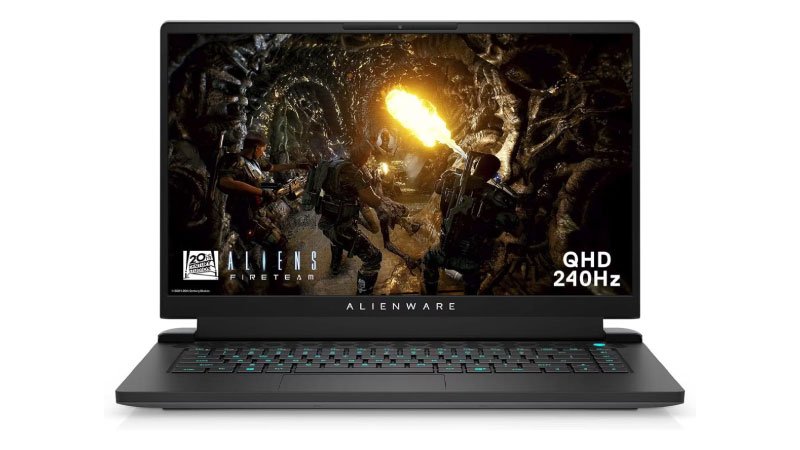
Key Specs:
- Intel Core i7-11800H
- NVIDIA GeForce RTX 3060/3070
- 15.6″ FHD (1920 x 1080) 165Hz display
- 16GB DDR4 RAM, 512GB SSD
Great for: Hardcore gamers and content creators need powerful performance combined with high refresh rates for seamless gaming.
The Alienware m15 R6, priced between $1,600 and $1,800, stands out in Dell’s lineup for hardcore gamers and content creators who demand high performance and durability. It features a robust thermal management system, ensuring the laptop performs optimally during intense gaming sessions. While it might be pricier and have a bulkier design than its competitors, its superior build quality and outstanding performance justify the investment. This laptop is perfect for users looking for a powerful gaming machine that can easily handle demanding games and multitask.
| Reasons to buy | Reasons to avoid |
| Superior build quality | On the pricier side |
| Outstanding performance for gaming and multitasking | Bulkier design compared to competitors |
ASUS ROG Zephyrus G14
Best portable gaming laptop
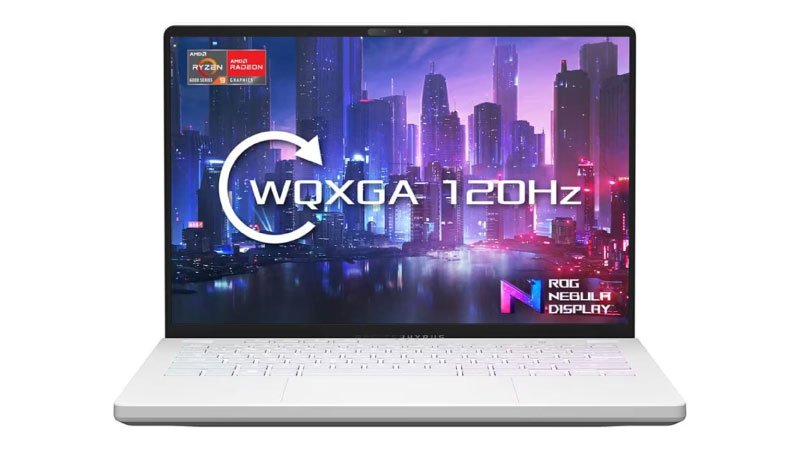
Key Specs:
- AMD Ryzen 9 5900HS
- NVIDIA GeForce RTX 3060
- 14″ FHD (1920 x 1080) 144Hz display
- 16GB DDR4 RAM, 1TB SSD
Great for: Gamers who prioritize portability without sacrificing performance.
ASUS’s ROG Zephyrus G14 is a marvel for gamers who value portability alongside performance, with a price range of $1,500 to $1,800. It distinguishes itself with an impressive battery life uncommon in gaming laptops, making it ideal for gaming on the go. Despite lacking a built-in webcam and the potential to get loud under load, its compact and lightweight design and powerful internals make it a compelling choice. The G14 caters to those who want a blend of mobility, performance, and battery life in one sleek package.
| Reasons to buy | Reasons to avoid |
| It can get loud under load | No built-in webcam |
| Powerful performance paired with good battery life | Can get loud under load |
Razer Blade 15
Best overall gaming laptop
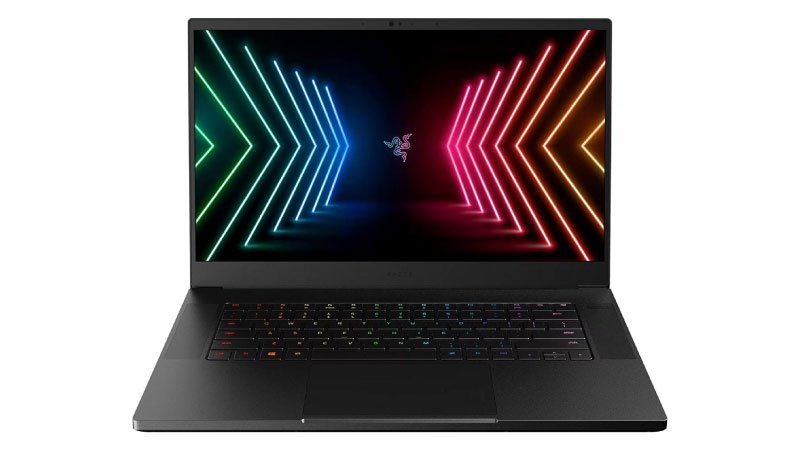
Key Specs:
- Intel Core i7-10750H/10875H
- NVIDIA GeForce RTX 3070/3080
- 15.6″ FHD (1920 x 1080) 360Hz or 4K OLED touch display options
- 16GB – 32GB RAM, Up to 1TB SSD
Great for: Gamers and professionals looking for a sleek design with top-tier performance and display quality.
The Razer Blade 15, priced from $2,000 to $2,500, is synonymous with luxury in the gaming laptop market. Razer offers gamers and professionals a sleek design, top-tier performance, and stunning display options, including a 4K OLED touchscreen. Its premium build and high-quality displays are its best features, although the high cost and potential overheating in advanced models are drawbacks. For those seeking a gaming laptop that doubles as a workstation for creative tasks, the Razer Blade 15 is an unbeatable option, offering elegance and power.
| Reasons to buy | Reasons to avoid |
| Slim and attractive design | High price point |
| Versatile for both gaming and creative work | The advanced models can get quite hot |
Lenovo Legion 5 Pro
Best value gaming laptop
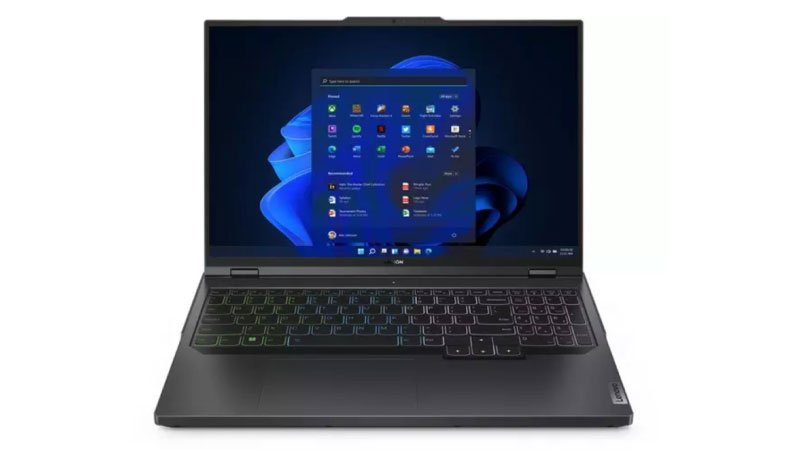
Key Specs:
- AMD Ryzen 7 5800H
- NVIDIA GeForce RTX 3070
- 16″ QHD (2560 x 1600) 165Hz display
- 16GB DDR4 RAM, 512GB SSD or more
Great for: Gamers seeking the best value for performance and screen real estate.
Lenovo’s Legion 5 Pro, priced between $1,300 and $1,700, is the go-to choice for gamers seeking excellent value without sacrificing screen quality or performance. Its standout feature is the 16-inch QHD display, providing immersive visuals at a higher resolution than typical gaming laptops. While it might be heavier and offer average battery life, its performance-to-price ratio is exceptional. The Legion 5 Pro is ideal for gamers who want a larger, high-quality display and robust performance at a reasonable price.
| Reasons to buy | Reasons to avoid |
| Excellent performance-to-price ratio | Heavier and bulkier than some competitors |
| High-quality, larger display for immersive gaming | Average battery life |
HP Omen 15
Best budget gaming laptop
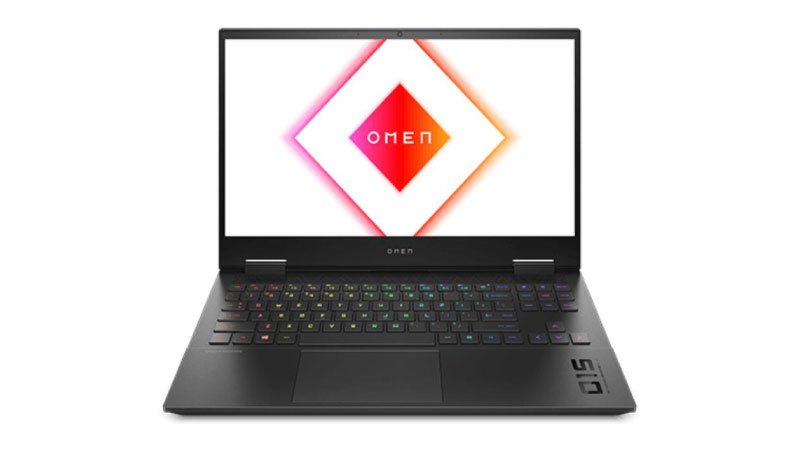
Key Specs:
- Intel Core i7-10750H or AMD Ryzen 7 4800H
- NVIDIA GeForce GTX 1660 Ti/RTX 2070
- 15.6″ FHD (1920 x 1080) 144Hz display
- 8GB – 32GB RAM, 512GB SSD or more
Great for: Budget-conscious gamers who don’t want to compromise on performance.
The HP Omen 15, with a price range of $1,100 to $1,400, caters to budget-conscious gamers who don’t want to compromise performance. It offers balanced performance at a competitive price, making it an attractive option for gamers looking to enter high-tier gaming without breaking the bank. Despite its design not appealing to everyone and the base model coming with minimal RAM, its performance for the price and upgradability make it a smart purchase. The Omen 15 is best for gamers seeking a solid entry-level gaming laptop with future-proofing potential.
| Reasons to buy | Reasons to avoid |
| Great performance for the price | Design might not appeal to everyone |
| Upgradable RAM and storage for future-proofing | The base model comes with minimal RAM |
Evolution of gaming laptops
We’ve seen an impressive journey in the evolution of gaming laptops, from bulky and underpowered systems to today’s sleek powerhouses. Let us explore the historical milestones and technological advancements that have shaped this exciting category of computers.
The origins of gaming laptops trace back to the 1980s when portable gaming was just a seedling, with devices that paled compared to their desktop counterparts. Users struggled with heavy, cumbersome gaming platforms offering minimal gaming capabilities. However, the turn of the century brought sleeker designs and improved performance, setting the stage for what was to come.
Displays
We’ve moved from the early days of dim, low-resolution screens to today’s high refresh rates, initially at the cost of image quality. Now, we can experience crisp visuals without compromises.
Graphics
Integrating dedicated GPUs allowed gaming laptops to rapidly close the gap with desktops. We’ve transitioned from the integrated and weak graphics of the early models to the powerhouse GPUs that rival, if not surpass, the capabilities of many desktops.
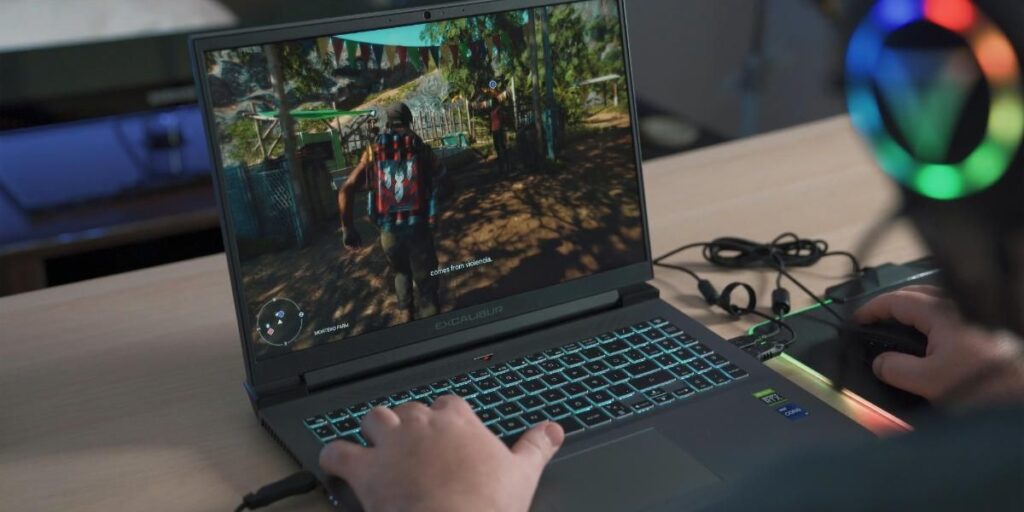
Performance
Driven by consumer demand for portable yet powerful devices, manufacturers have boosted the processing power of gaming laptops. We’ve seen a significant leap from early CPUs that barely managed basic gaming to current multiprocessors capable of easily handling the most demanding games and applications.
Cooling Systems
As performance has increased, so have advanced cooling systems. Today’s gaming laptops boast sophisticated cooling solutions that keep thermal throttling at bay, maintaining remarkable performance even under heavy loads.
Portability
It’s not just about power. Our gaming laptops have become increasingly more portable, shedding excess weight and bulk without sacrificing performance. This perfect blend of power and portability exemplifies manufacturers’ most significant strides.
Gaming laptop market
The gaming laptop market is rapidly evolving, with a notable influx in consumer interest and sales figures across various demographics. Here, we’ll look at who’s buying gaming laptops and how the market is expanding.

Demographics and audience
We’ve observed that the gaming laptop market isn’t confined to a single demographic. Though predominantly composed of young adults, including millennials and Gen Z gamers.
Sales trends and market growth
The gaming laptop market shows impressive growth when we talk about sales trends. A forecast suggests the market could reach a valuation of US$ 19,190.4 Million by 2033, driven by the demand for advanced graphics, processors, and the allure of portability. The United States claims a substantial portion of the market, holding a 32.4% share in 2023. Technological advances, such as the introduction of gaming laptops with NVIDIA 30 Series laptop GPUs, are fueling interest and sales in this sector. While powerful hardware is a major selling point, it’s also worth noting that high-performance components can impact battery life, which is a consistent concern in customer feedback.
Key features and specifications
Performance components
Processors and Graphics: The heart of any gaming laptop is its CPU and GPU. Current market leaders include fast AMD Ryzen 7000 CPUs and high-end NVIDIA GPUs like the RTX 4090, which offer exceptional performance and support for advanced gaming features like ray tracing.
Memory and storage: Gaming laptops typically start with 16GB of RAM, with 32GB or more options for intensive multitasking. Solid-state drives (SSDs) are standard storage, providing quick game load times and ample space for large game files.
Design and build quality
Chassis and Portability: A strong yet lightweight build is crucial for durability and portability. Many high-performance gaming laptops feature chassis made of premium materials like aluminum or magnesium alloy, and they incorporate a range of connectivity ports, such as USB Type-C, HDMI 2.1, and Ethernet.
Related read: Why is my HDMI not working?
Keyboard and touchpad: Gaming laptops usually have keyboards with customizable RGB lighting and high essential travel for a comfortable and immersive gaming experience. Precision touchpads are standard, though gamers often use external mice for better control.
Cooling systems
Innovative cooling solutions: Efficient cooling is essential to keep a gaming laptop’s high-performance components running optimally. Many models have advanced thermal solutions, including multiple fans, dedicated heat pipes, and sometimes liquid cooling systems.
Noise management: Good cooling systems aim to reduce thermal throttling while keeping noise levels low. Devices like the Dell Alienware m16 R1 (2023) strike a balance between effective cooling and maintaining a quiet operation.
Display technologies
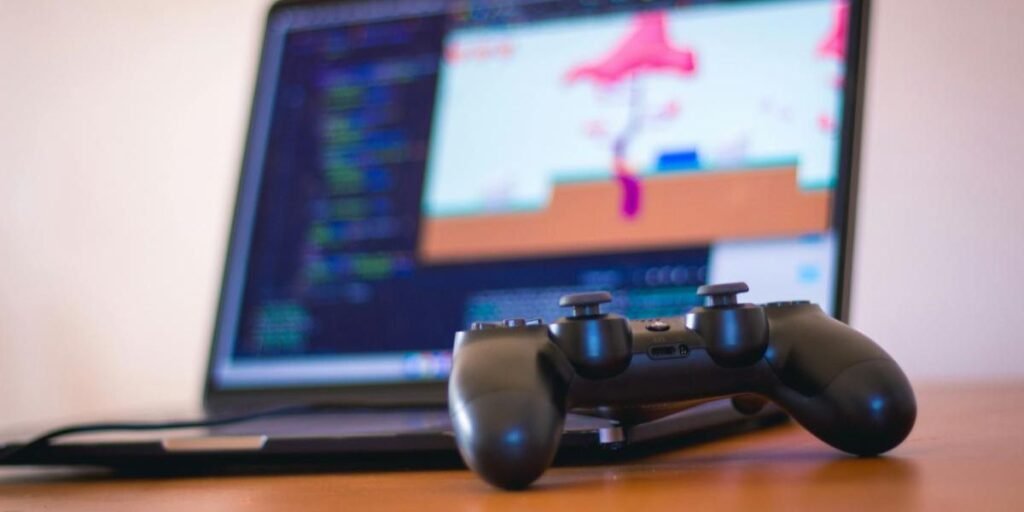
High refresh rates and resolution: We’re seeing gaming laptop displays with high refresh rates, which can exceed 144Hz, for fluid motion and resolutions up to 4K, delivering sharp and detailed visuals.
Panel types and features: IPS panels offer great color accuracy and viewing angles, and many gaming laptops employ adaptive sync technologies, such as G-SYNC or FreeSync, to eliminate screen tearing and improve the overall gaming experience.
Frequently asked questions
Are gaming laptops worth the price in today’s market?
Whether you’re buying or selling gaming laptops, with the technological advancements, we believe gaming laptops offer substantial value for their price. Their capacity to handle demanding games and versatility for both work and play makes them a solid investment for many.
What is the difference between high-end and budget gaming laptops?
High-end gaming laptops distinguish themselves with top-tier graphics cards, swift processors, and premium build quality, capable of running demanding games at maximum settings. They often feature high refresh-rate displays and robust multi-core processors for intense multitasking. On the other hand, budget gaming laptops make gaming more accessible by compromising on display quality, frame rates, and sometimes storage, offering a more cost-effective solution for gamers willing to accept lower performance for a significant price reduction.
What is the difference between gaming laptops and normal laptops?
Gaming laptops boast powerful CPUs, GPUs, and fast RAM to handle demanding games, featuring high refresh-rate displays and enhanced cooling systems. Normal laptops focus on general productivity with less emphasis on graphics performance, offering longer battery life and portability. The key differences lie in their design priorities: performance for gaming versus efficiency and mobility for everyday use.
What specs should I look for in a gaming laptop?
When choosing a gaming laptop, prioritize a high-performance GPU like NVIDIA GeForce RTX, a multi-core CPU (Intel Core i7 or AMD Ryzen 7), at least 16GB of RAM, a fast SSD for storage, and a display with a high refresh rate (120Hz or higher) for smooth, immersive gameplay.
What are the best gaming laptops?
The top gaming laptops include the durable and powerful Alienware m15 R6, the portable ASUS ROG Zephyrus G14 with impressive battery life, and the sleek Razer Blade 15 with premium features. For value seekers, Lenovo’s Legion 5 Pro offers a large, immersive display at a reasonable price, while the HP Omen 15 balances performance with affordability, making it ideal for budget-conscious gamers. Each model caters to different preferences, ensuring a choice for every type of gamer.
What makes a laptop specifically good for gaming?
Gaming laptops are designed with performance in mind, featuring high-speed processors, advanced graphics cards, and ample RAM to handle demanding games. They also boast high refresh-rate displays for smoother visuals, enhanced cooling systems to manage heat, and often include gaming-specific keyboard and audio features for an immersive experience.
Dive deeper into our active and passive speakers guide
How important is the GPU in a gaming laptop?
The GPU, or graphics processing unit, is crucial in a gaming laptop as it directly affects the ability to render and play games at high resolutions and frame rates. A more powerful GPU will provide better performance, allowing for smoother gameplay and the ability to play more graphically intensive games at higher settings.
Can gaming laptops be used for everyday tasks?
Absolutely! While gaming laptops are engineered for high-performance gaming, they can handle everyday tasks such as browsing the internet, streaming videos with VPNs, and running office applications. Their robust specifications often make them overqualified for such tasks, ensuring fast and efficient performance across the board.









